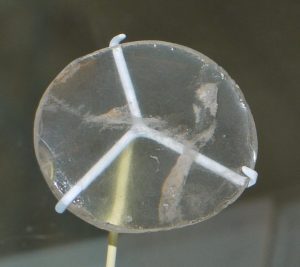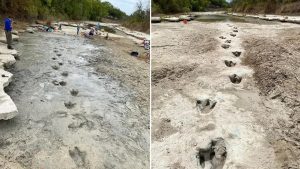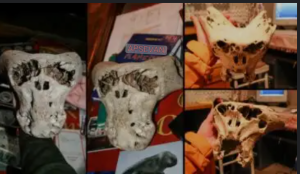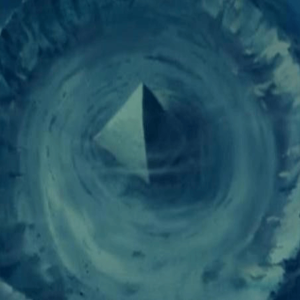The tunnels of America


The Hopi Indians , settled in the North American state of Arizona, and who claim to come from a vanished continent in what is now the Pacific Ocean, remember that their ancestors were instructed and helped by beings who moved on flying shields, and who they taught the technique of tunnel construction and underground installations.
Many other indigenous legends and traditions of the American continent speak of the existence of communication networks and underground cities.
There is a large literature and enough researchers who maintain the hypothesis that intelligent beings unknown to us live below the surface of our planet.
There are various hypotheses about the possibility that intelligences from outside our planet have underground or underwater footholds on planet Earth. I am not going to go into the analysis of these possibilities here, since they are part of another study that deserves its own dedication.
So I am not going to talk about organizations like the Hollow Earth Society or SAMISDAT , which seek to establish contact with supposed inhabitants of the interior of the planet, the first, while the second adds fuel to the fire of the existence of a whole organization of Nazi ideology —naturally linked to the leading figures of Nazi Germany— that survives under the skin of our planet, with entrances to its world especially at the North Pole and the Brazilian Amazon.
I am not going to talk about such organizations or similar ones, nor am I going to go into the subject of Shamballah or Agartha —supposed concepts of what would be underground control centers in the confines of Central Asia— nor in that of the supposed ‘ King of the World ‘, because this is not the time to deny or confirm the validity of all these assumptions. The day that I think it is appropriate to talk about them, I will do so in the clearest way possible.
I am going to focus in this article on the places that, in the American continent , have the greatest possibilities of connecting with this subterranean intelligent world that emerges in many narrations of the North, Central and South Indians of this vast continent, collected from the the time of the conquest to the present day. In order to give some order to the exposition of these places —and given that the chronological dating of the supposed tunnels is lost in the indefiniteness— I am going to go through America in the pages that follow, beginning with the North and ending, descending on the map, in the North of Chile.
Let it be said, before descending, that there is more than one researcher who affirms that the North Pole houses warm lands and the entrance to an inner world.
MOUNT SHASTA
The Hopi Indians claim that their ancestors came from sunken lands in the remote past in what is now the Pacific Ocean. And that those who helped them in their exodus to the American continent were human-like beings who mastered the technique of flight and the construction of tunnels and underground facilities. The Hopi are today settled in the state of Arizona, near the Pacific coast. Between them and the coast, is the state of California. And in the far north of this state there is a snow-white volcano called Shasta .
The Indian legends of the place explain that inside there is an immense city that serves as a refuge for a race of white men, endowed with superior powers, survivors of an ancient culture that has disappeared in what is now the Pacific Ocean. The only alleged witness who entered the city, the physician Dr. Doreal , stated in 1931 that the manner of construction of its buildings reminded him of Mayan or Aztec constructions.
The name Shasta does not come from English, nor from any of the Indian languages or dialects. Instead, it is a Sanskrit word , meaning “wise,” “venerable,” and “judge.” Without having a notion of Sanskrit, Indian traditions speak of its tenants as venerable beings who live inside the white mountain because it is a gateway to an inner world of millenary antiquity.
More recent notifications from the inhabitants of the nearby Weed lumberjack colony refer to sporadic appearances of beings dressed in white robes that enter and exit the mountain, only to disappear again while a bluish flash is appreciated.
Narratives collected from the Sioux and Apache Indians confirm the conviction of the Hopi and the natives of the Mount Shasta region that a race of white-skinned beings lives in the subsoil of the American continent, survivors of a land sunken in the ocean. . But also much further north, in Alaska and in even more northern areas, the Eskimos and Indians speak again and again of the race of white men who inhabits the subsoil of their territories.
A CITY UNDER THE PYRAMID
Descending towards the South, in the spring of 1977 in Mexico I picked up the belief that under the pyramid of the Sun in Teotihuacán (the “city of the gods”), it hides on the opposite side of the earth’s crust —that is, inside underground–a city in which the white god is said to be found.
400 VIRGIN BUILDINGS
If we move from here to the Yucatan peninsula , we will find in its extreme north, hidden in the thickness of the jungle, a city discovered in 1941 that extends over an area of 48 km 2 , and that keeps in the silence of oblivion more of 400 buildings that at some remote time knew splendor.
It was found by a group of boys who, playing near a lagoon where they used to bathe, came across a wall of worked stones, hidden by the vegetation. Not having the Mexicans sufficient resources to undertake the exploration of the place, they required North American help, coming two archaeologists specialized in Mayan culture, attached to the Middle American Research Institute of the University of New Orleans.
They also determined that the project to clean up and study the huge city was beyond their means, so they would have to create a partnership with other entities. The war caused the project to be temporarily shelved. Until, in 1956, the University of New Orleans, this time associated with the National Geographic Society and the National Institute of Anthropology of Mexico, resumed research.
Andrews , the archaeologist who led the expedition, dedicated himself —while the team of workers began to clear the buildings— to collect information among the Indians of the region. A shaman told him that the city was called Dzibilchaltún , a word that was unknown in the local Mayan language, and that the lagoon was called Xlacah , which translates as “old city.”
THE ENGULVED CITY
Wanting to find out the reason for this name, the North American archaeologist was narrated a legend transmitted by the Indians from generation to generation, and which affirmed that, at the bottom of the lagoon, there was a part of the city that rose above, in the jungle. According to the narration of the old shaman, many centuries before there was a great palace in the city of Dzibilchaltún , residence of the cacique. One afternoon an unknown old man came to the place and asked the ruler for lodging.
Although he showed obvious ill will, he nonetheless ordered his slaves to prepare a room for the traveler. Meanwhile, the old man opened his travel bag and from it extracted an enormous green gemstone, which he gave to the sovereign as a token of gratitude for the lodging. Surprised with the unexpected present, the cacique questioned the guest about where the stone came from.
As the old man refused to answer, his host asked him if he had any other precious stones in his bag. And since the interrogated continued to remain silent, the sovereign was enraged and ordered his servants to immediately execute the foreigner. After the crime, which violated the sacred rules of the lodging, the cacique himself checked his victim’s bag, assuming that he would find more valuable objects in it.
But, to his despair, he only found some old clothes and a black stone without much appeal. Filled with rage, the sovereign threw the stone out of the palace. As soon as it fell to the ground, there was a formidable explosion, and immediately the earth opened up, engulfing the building, which disappeared under the waters of the well, which emerged at the exact point where the stone fell to the ground. The cacique, his servants and his family ended up at the bottom of the lagoon, and they were never seen again. So far the legend.
But let’s continue with these ruins in the northern Yucatan . The expedition ended up unblocking a pyramid that housed idols different from the usual representations of the Mayan divinities. Another nearby building would reveal itself to be much more important. It was a construction that totally differed from the traditional Mayan styles, offering architectural characteristics never seen in any of the known Mayan cities.
Inside the temple —all adorned with representations of marine animals— Andrews discovered a secret sanctuary, walled up with a wall, in which there was an altar with seven idols that represented deformed beings, hybrids between fish and men . Therefore similar beings to those who in remote times revealed inconceivable astronomical knowledge to the Dogons , in central Africa, and to those others who refer to us in Assyrian traditions when they speak of their divinity Oannes .
In 1961, Andrews returned to Dzibilchaltún , this time accompanied by two experienced divers, who had to complete with better equipment the immersion attempt made in 1956 by David Conkle and W. Robbinet , who reached a depth of 45 meters, at which they gave up on their endeavor due to the total lack of prevailing light. In this second attempt, the divers were the experienced archaeologist Marden , famous for having found the remains of the HMS Bounty, the ship of the great mutiny, in 1956, and B. Littlehales .
After the first soundings, it became clear that the lagoon developed in a boot-like shape, continuing underground to a point that the underwater archaeologists could not determine. When they reached the bottom of the vertical, they noticed that there was a fairly pronounced decline there, heading towards the underground section of the well. And there they found various remains of carved columns and remains of other constructions. With which it seemed to confirm that the legend of the submerged palace was based on a real event.
This Yucatan enclave bears certain similarities to the ruins of Nan Matol , the dead city in the Pacific Ocean from which the American Indians claim to have come. There is also an enigmatic city abandoned and devoured by the jungle, at whose feet, in the depths of the sea, divers also discovered columns and buildings engulfed by water.
THE EMPEROR OF THE UNIVERSE
We are going to the other coast of Mexico, slightly further south. In Jalisco , and some 120 km inland from Cape Corrientes, the indigenous say that an underground temple is hidden in which the ’emperor of the universe’ was once venerated.
And that, when the current evolutionary cycle ends, the ancient displaced people will rule the Earth with splendor. Such a statement is related to the legacy contained in the passages of Tayu Wari , in the jungle of Ecuador.
THE GOLD LEAF OF THE LACANDONS
From here to the South, to the Mexican state of Chiapas , next to the border with Guatemala. There live some different Indians, of white complexion, for whose underground secrets President Roosevelt himself had already been interested in in March 1942 . Well, the Lacandones who know of their ancestors say that in the extensive underground network that furrows their territory, some gold sheets are found in some secret place, on which someone left written the history of the ancient peoples of the world, in addition to describing precisely what World War II would be, involving all the most powerful nations on Earth.
This story reaches the ears of Roosevelt a few months after the United States suffered the Japanese attack on Pearl Harbor . Similar gold plates are also closely related to the ones that we will see later that are hidden in the aforementioned tunnels of Tayu Wari , in the Ecuadorian Orient.
50 KM OF TUNNEL
Let’s continue south. The next step that is taken from Chiapas steps on Guatemalan soil. In the year 1689, the missionary Francisco Antonio Fuentes y Guzmán had no objection to describing the “marvelous structure of the tunnels of the town of Puchuta “, which runs through the interior of the earth to the town of Tecpan , in Guatemala, located about 50 km from the beginning of the underground structure.
TO MEXICO IN ONE HOUR
At the end of the 40s of the last century, a book entitled Incidents of a trip to Central America, Chiapas and the Yucatan appeared, written by the American lawyer John Lloyd Stephens , who visited Guatemala on a diplomatic mission in the company of his friend, the artist Frederick Catherwood . There, in Santa Cruz del Quiché , an old Spanish priest narrated his visit, years ago, to an area located on the other side of the mountains and a four-day walk towards the Mexican border, which was inhabited by a tribe of Indians. that still remained in the original state in which they were before the conquest.
In a press conference held in New York some time after the publication of the book, he added that, gathering more information in the area, he found out that these Indians had been able to survive in their original state thanks to the fact that —whenever foreign troops appeared— they hid under earth, in an underground world endowed with light, the secret of which was bequeathed to them in ancient times by the gods who inhabit the underground . And he provided his own testimony of having begun to retrace a tunnel under one of the buildings in Santa Cruz del Quiché, through which, in the opinion of the Indians, one could reach Mexico in an hour.
THE TEMPLE OF THE MOON
In October 1985, together with Juan José Benítez , the Vilchez brothers and my good friend Gretchen Andersen —who, by the way, was born at the foot of Mount Shasta where I started this article— I had the opportunity to access a tunnel dug in the basement of a farm located in the mountains of Costa Rica. We entered a large cavity that gave way to an artificial tunnel that descended almost vertically into the depths of that terrain.
And already much further south, in 1986 I entered alone in the intricate jungle that, in the Ecuadorian Amazonian East, would take me to the mouth of the tunnel system known by Los Tayos — Tayu Wari in the language of the Jivaros who guard them —, in which the Hungarian ethnologist, seeker, adventurer and miner Janos Moricz had found years before, and after searching for it throughout the South American subcontinent, an authentic library of metal plates .
In them, the chronological relationship of the history of Humanity, the origin of man on Earth and the scientific knowledge of an extinct civilization were engraved with signs and ideographic writing.
THE UNDERGROUND CITIES OF THE GODS
According to the testimonies collected, two main underground paths started from there: one headed east towards the Amazon basin in Brazilian territory, and the other headed south, to run through the Peruvian subsoil to Cuzco , Lake Titicaca on the border with Bolivia, and finally reach the area bordering Arica , in the extreme north of Chile.
On the other hand, according to the information meticulously collected in Brazil by the German journalist Karl Brugger , with whose murder in the 1980s the documents of his investigation disappeared, various cities hidden in the thicket would be found in the upper Amazon basin, built by beings from outer space in remote times, and that would connect with a system of thirteen hidden cities inside the Andes mountain range.
THE REFUGE OF THE INCAS
Linking with this knowledge, we know since the time of the conquest that the natives hid their enormous wealth underground, to avoid looting by Spanish troops. Everything seems to indicate that they used the existing underground systems for this long before, built by a race long before the Inca, and to which some of them had access thanks to the legacy of their ancestors. Possibly, the Atacama desert in Chile is the end of the journey, in the extreme South.
We are talking, then, at the end of the journey, of the area that the traditions of the Hopi Indians cited at the beginning of this article —up there in North American Arizona— indicate as the point of arrival of their ancestors when —helped by some beings who dominated both the secret of the flight and the construction of tunnels and underground facilities-, were forced to abandon the land they occupied in what is now the Pacific Ocean.
But the location of the concrete signals —which exist—, the adequate deciphering of their corrective keys —which exist—, as well as the decision to take the committed step inside, is —as always happens in all sincere seekers— such a difficult task. committed as non-transferable.




